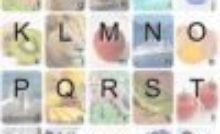Lesson 7. The Complete Guide of Adjectives in English


Adjectives in English


What is an adjective?
Adjectives, which is one of the parts of speech, are words that used to describe nouns or pronouns. Adjectives give information about opinion, size, shape, age, color, origin, material, or temperature of an object.
| Information | Examples |
| opinion | beautiful, smart, lovely |
| size | short, long, small |
| shape | round, square, rectangular |
| age | young, old, antique |
| color | red, blue, gold |
| origin | English, Asian, American |
| material | wooden, plastic, glass |
| temperature | hot, cold, warm |
Where do we put adjectives in a sentence?
In general, we put the adjective before the noun they modify.
Structure: Adjective + Noun
Examples:
A great opinion.
The brown chair.
That Chinese girl.
The adjective appears after the noun if there is the following verb in the sentence:
to be, appear, become, feel, get, go, keep, seem, smell, sound, turn, taste
Structure: Noun + Verb + Adjective
Examples:
The opinion sounds great.
The chair is brown.
That girl is Chinese.
What do we do if there are more than one adjectives in a sentence?
The correct order of adjectives in a sentence is:
Opinion – Size – Temperature – Age – Shape – Color – Origin – Material
Examples:
The small young girl is my cousin.
[size – age]
That beautiful antique France paint is painted by Leonardo da Vinci.
[opinion – age – origin]
The big round brown wooden table is new.
[size – shape – color – material]
Note: Adjectives are separated by ‘commas(,)‘, ‘and‘ and ‘but‘ if adjectives modify a noun in the same way. These are called coordinate adjectives.
Examples:
The beautiful, lovely girl is my cousin.
[opinion – opinion]
The expensive, beautiful and comfortable sofa is new.
[opinion – opinion – opinion]
The expensive, beautiful but uncomfortable dress is not mine.
[opinion – opinion – opinion]
How is the form of the adjective? Are they regular or irregular?
There are adjective degrees that come in irregular form. We use adjective degrees to describe the different degrees of comparison: positive adjectives, comparative adjectives, and superlative adjectives.
Positive adjectives: tall, young, beautiful.
Comparative adjectives: taller, younger, more beautiful.
Superlative adjectives: the tallest, the youngest, the most beautiful.
Examples:
Mary is young.
Mary is younger than James.
Mary is the youngest in the family.
How to emphasize the meaning of an adjective?
We use the adverbs ‘very’ or ‘really’ before the adjective to emphasize an adjective.
Examples:
James is very tall.
Chinese is a really important language.
Let’s learn English today! Join us at LingoCards!
Recent Posts
How to Say “Could you write it down?” in 50 Different Languages?
When you travel other countries or live abroad, you will communicate with local people and…
How to Say “Of course.” in 50 Different Languages?
"Of course." is a practical phrase in many situations. When people ask you to do…
How to Say “No problem.” in 50 Different Languages?
People may say "Sorry." when they cause problem to you. They may hit you accidentally…
How to Say “I don’t know.” in 50 Different Languages?
When people ask you something and you have no idea for that, you can say…
How to Say “I understand.” in 50 Different Languages?
During traveling abroad, it's often not easy to communicate with people because you don't know…
How to Say “Please.” in 50 Different Languages?
Learning how to say "Please." in local language will be very useful during your trip.…
